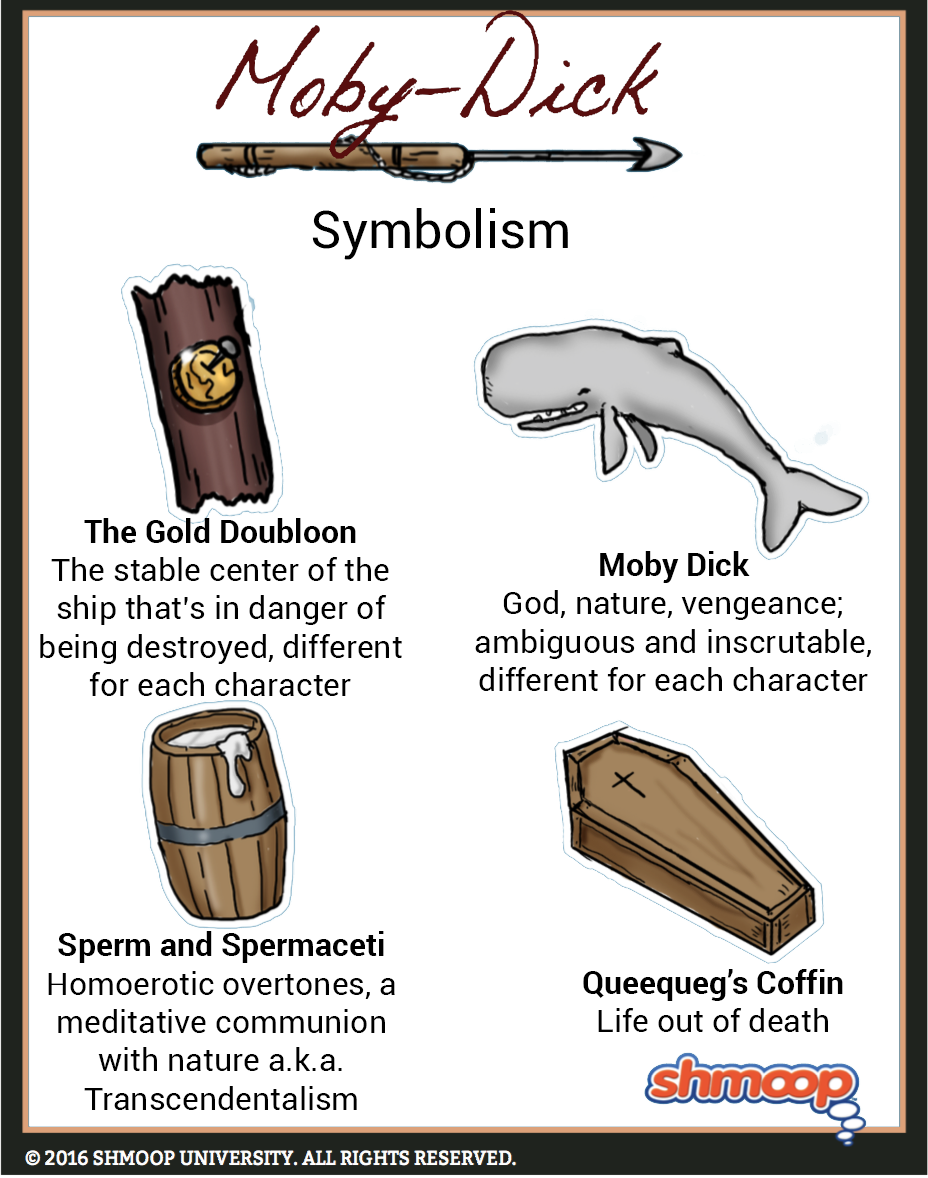Symbolism, Imagery, Allegory

(Click the symbolism infographic to download.)
Gold, Hard Cash
Captain Ahab’s not in his monomaniacal revenge quest for the money, but he knows how to motivate his crew: he nails a gold doubloon to the mast and promises that whoever sees Moby Dick first can have it. (Although, by the end of the novel, he’ll insist that he won it himself.)
As if that weren’t symbolic enough, Melville contrives a scene in which all the important characters, and a few of the unimportant ones, pass by this gold doubloon and give their interpretations of it aloud in a series of little monologues. You know how it goes: Ahab thinks every detail represents himself, Starbuck sees a dark, demonic valley into which the light of God’s sun doesn’t shine, Stubb makes up something silly about astrology, Flask just sees money, and so on.
Hey, maybe it’s a little staged, but it gets the job done. (It’s Chapter 99, by the way, if you want to look back at it, or review the most important points in our "Detailed Summary.")
Just as in our interpretation of the White Whale, we’re more interested in knowing what all these different reactions show us about the characters than in deciding which of them is best or most accurate. However, as opposed to Moby Dick, the reader does learn, objectively, what the gold doubloon looks like; Ishmael (or perhaps a third-person omniscient narrator) describes the South American coin’s origins and the objects depicted on it. So we do actually have a yardstick with which we could measure the strangeness of what everyone sees.
How close is the "real" coin to each character’s interpretation? Do they focus on insignificant details in the image? On its monetary value? On the main part of the picture?
Of course, there is one way of looking at the gold doubloon that might be better than all the others: Pip’s. In his madness, Pip describes the doubloon as the "ship’s navel," which all the crazy people on the revenge quest are "on fire to unscrew" (99.22). In this way, the coin comes to symbolize a stable center, and we see how Ahab’s monomania is on track to pull it away, leaving the Pequod with a void at its very heart (or its very belly).